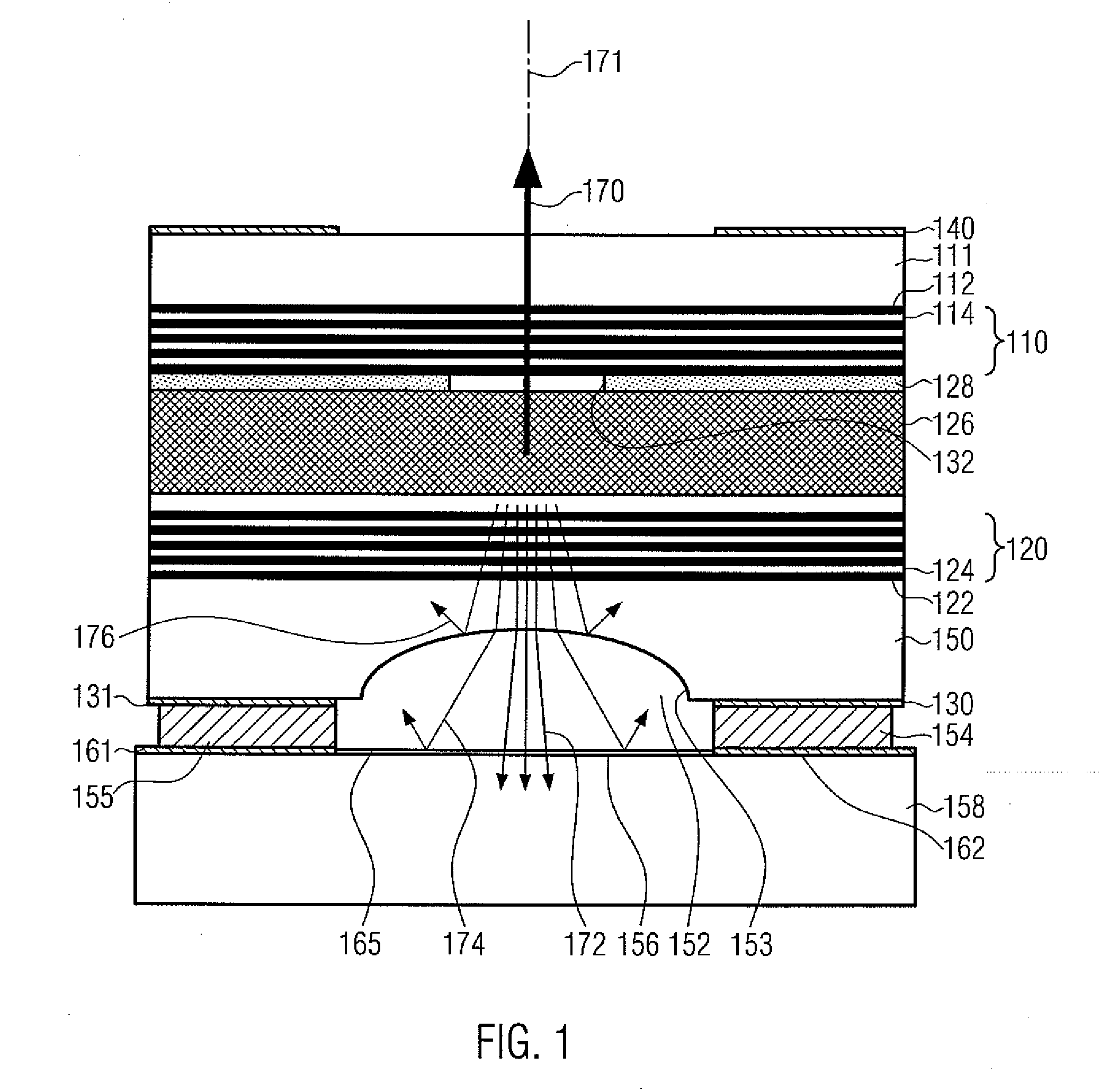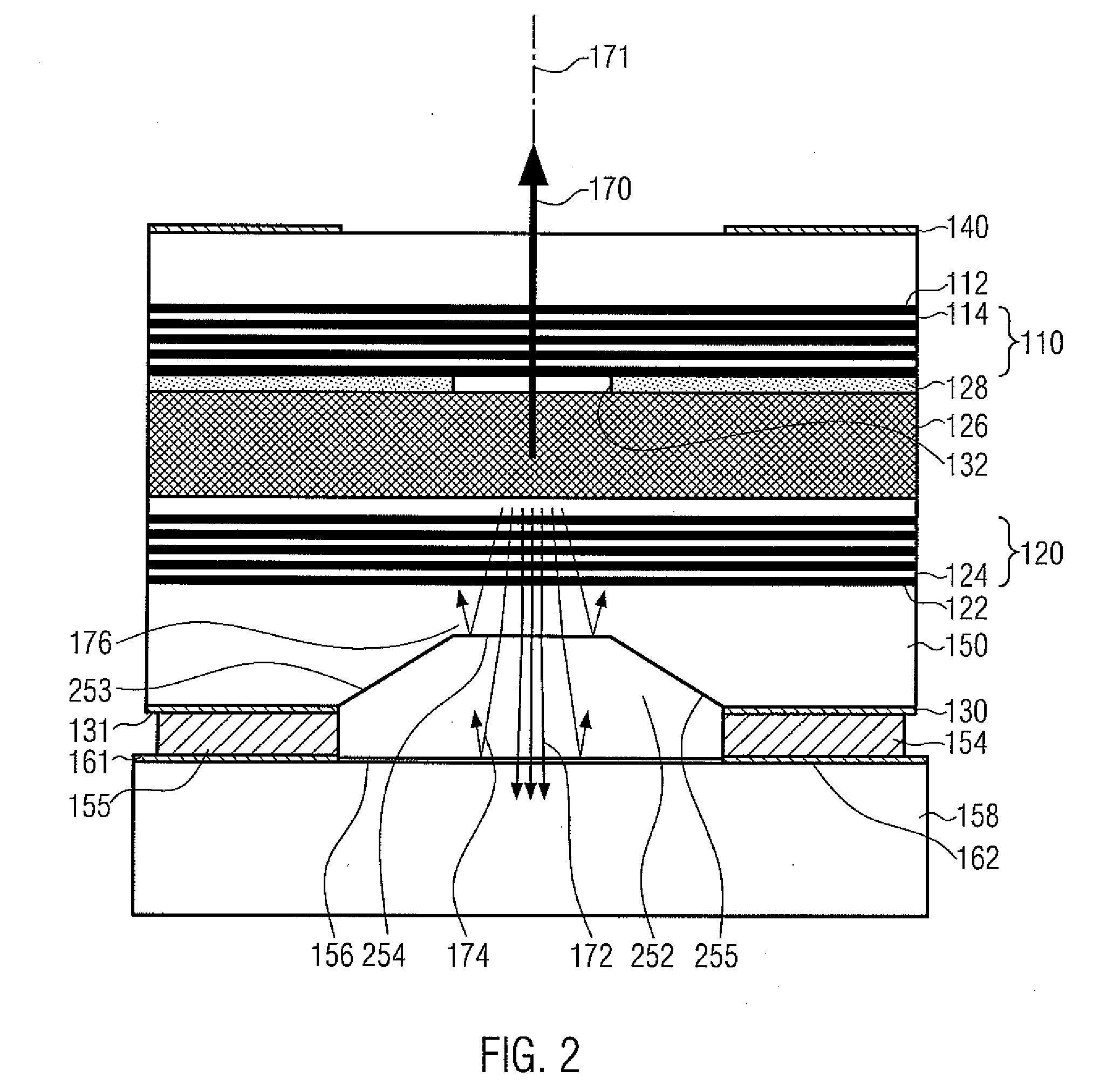Optoelectronic device and method of operating optoelectronic device
a technology of optoelectronic devices and optoelectronic devices, which is applied in the direction of lasers, electrical equipment, laser details, etc., can solve the problems of less efficient dbrs, unstable operation, and inability to employ so-called stable resonators on the vertical cavity surface of the emitting laser
- Summary
- Abstract
- Description
- Claims
- Application Information
AI Technical Summary
Benefits of technology
Problems solved by technology
Method used
Image
Examples
Embodiment Construction
[0031]FIG. 1 shows an optoelectronic device according to the present invention. The optoelectronic device comprises a vertical cavity surface emitting laser (VCSEL) which is formed of an active layer 126 sandwiched between an upper distributed Bragg reflector (DBR) 110 formed of a stack of layers 112 and 114 with different index of refraction, and a lower distributed Bragg reflector 120 formed of another stack of layers of different indices of refraction 122 and 124. An aperture layer 128 is formed between the upper distributed Bragg reflector 20 and the active layer 126. The aperture layer may be formed of a partially oxidized AlGaAs layer. The central unoxidized portion of the AlGaAs layer 128 comprises an electrical aperture 132. The surrounding oxidized portion of the AlGaAs layer 128 comprises an isolation region. This arrangement provides a constriction of the electrical drive current passing through the laser. The aperture 132 has an approximate diameter of about 2 to 20 μm. ...
PUM
 Login to View More
Login to View More Abstract
Description
Claims
Application Information
 Login to View More
Login to View More - R&D
- Intellectual Property
- Life Sciences
- Materials
- Tech Scout
- Unparalleled Data Quality
- Higher Quality Content
- 60% Fewer Hallucinations
Browse by: Latest US Patents, China's latest patents, Technical Efficacy Thesaurus, Application Domain, Technology Topic, Popular Technical Reports.
© 2025 PatSnap. All rights reserved.Legal|Privacy policy|Modern Slavery Act Transparency Statement|Sitemap|About US| Contact US: help@patsnap.com



